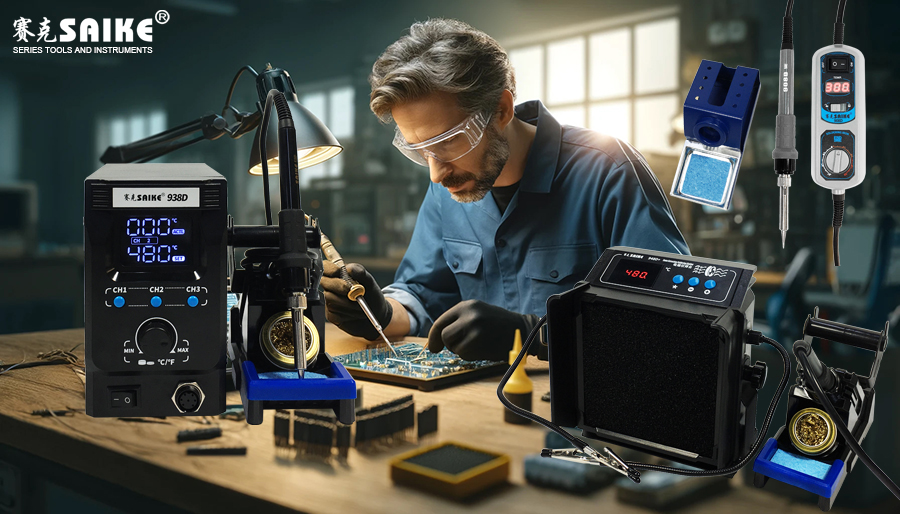
SK-YJ000DLT-KP 100026
Electronic production, whether for professional electronic engineers or amateur enthusiasts, is inseparable from the important tool of the electric soldering iron. The electric soldering iron plays a crucial role in electronic production and is a powerful assistant for completing circuit construction, component connection, and repair work. This article will delve into the specific applications and usage techniques of the electric soldering iron in electronic production.
I. Basic Role of the Electric Soldering Iron
The electric soldering iron is mainly used for soldering electronic components and wires, achieving reliable connections between component pins and the circuit board by melting solder. In electronic production, the quality of soldering directly affects the stability and performance of the circuit. Therefore, mastering correct soldering techniques and methods of using the electric soldering iron is an essential skill for every electronic production enthusiast.
II. Selection of Electric Soldering Iron
In electronic production, choosing a suitable electric soldering iron is crucial. Generally, electric soldering irons can be classified into different types based on their power and temperature control capabilities. For delicate soldering work, such as soldering small SMD components, it is recommended to choose an electric soldering iron with moderate power and precise temperature control. For soldering large components or wires, a higher-power electric soldering iron may be required to ensure sufficient heat output.
III. Soldering Techniques and Precautions
1.Preheating and Temperature Control: Before soldering with an electric soldering iron, the soldering iron tip should be preheated to the appropriate temperature. Excessively high temperatures may damage components, while too low temperatures may result in insecure soldering. Therefore, proper temperature setting is crucial for successful soldering.
2.Soldering Time and Solder Joint Quality: The soldering time should be controlled within a suitable range to ensure that the solder melts sufficiently without causing damage to the components due to excessive heating. Additionally, the quality of the solder joints directly affects the stability and reliability of the circuit.
3.Soldering Sequence and Strategy: When soldering multiple components, it is important to plan the soldering sequence reasonably to avoid affecting already soldered components during subsequent soldering processes. Adopting appropriate soldering strategies, such as segmented soldering or staggered soldering, can help improve soldering efficiency and quality.
IV. Maintenance and Servicing of Electric Soldering Iron
To extend the service life and maintain good performance of the electric soldering iron, regular maintenance and servicing are essential. This includes cleaning solder residue and oxides from the soldering iron tip, checking the integrity of the power cord and plug, and regularly replacing aging soldering iron tips.
V. Safe Use of Electric Soldering Iron
Safety should always be a top priority when using an electric soldering iron. Operators should wear appropriate protective equipment, such as heat-resistant gloves and goggles, to prevent burns and eye injuries from splashing solder. Additionally, the work area should be kept clean and tidy, and flammable items should be kept away from the soldering site to prevent fire hazards.
VI. Summary
The electric soldering iron is an indispensable tool in electronic production, and its proper use and maintenance are crucial for improving soldering quality and ensuring operational safety. By mastering appropriate soldering techniques, selecting the right type of electric soldering iron, and performing regular maintenance and servicing, we can better utilize this powerful assistant to complete various electronic production tasks. Meanwhile, always remembering safety operation specifications ensures that we can enjoy the fun of electronic production while guaranteeing the safety of ourselves and others.


